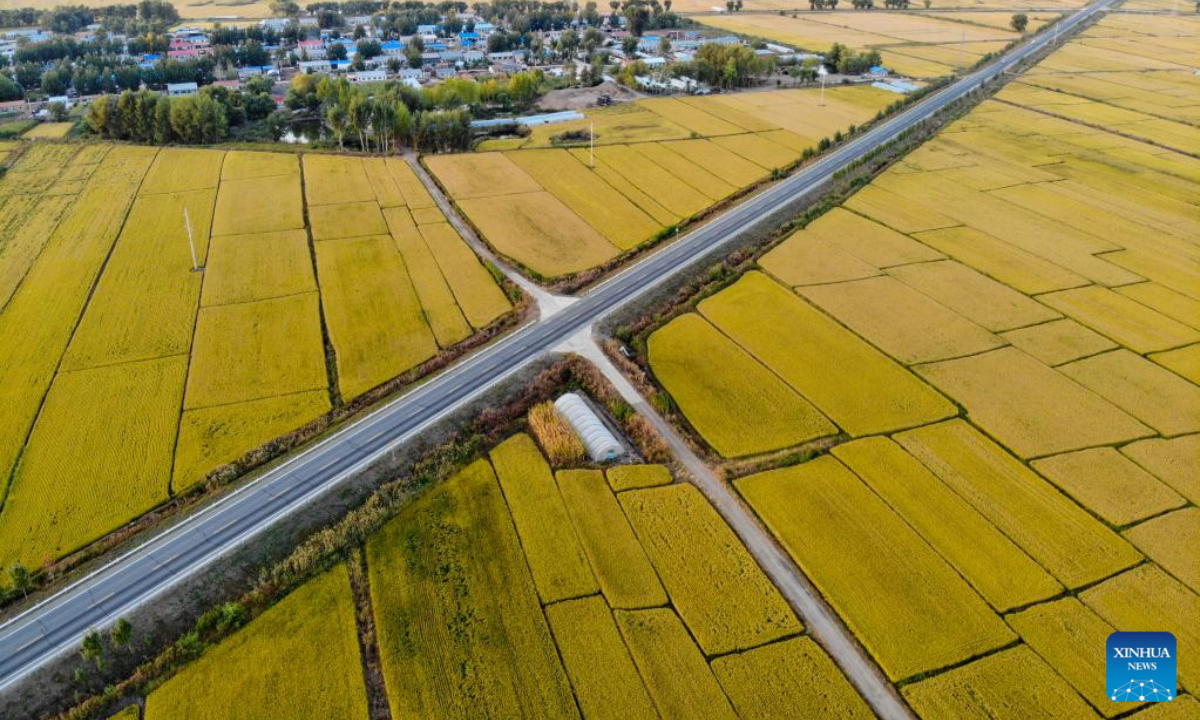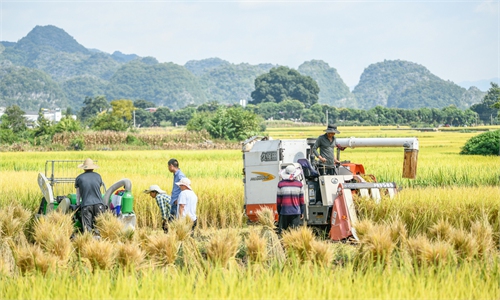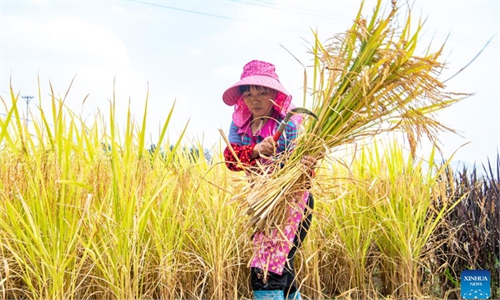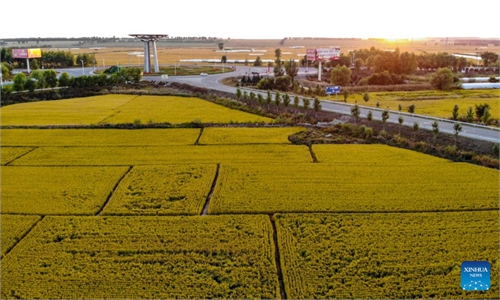
Aerial photo taken on Sep 15, 2022 shows rice fields in Gannan County of Qiqihar, northeast China's Heilongjiang Province. Photo:Xinhua
China's cumulative imports of rice showed rapid growth during the first eight months of this year, customs data showed on Sunday. The rise in rice imports, which are expected to be mainly used as feed grain, mainly reflected low global prices and does not reflect changes in domestic output due to drought, experts noted.
China's General Administration of Customs (GAC) said that from January to August, total rice imports reached 4.56 million tons, up 42.5 percent year-on-year.
"China increased rice imports because global supplies were plentiful and prices were low compared with other grain crops such as wheat," Li Guoxiang, a research fellow at the Chinese Academy of Social Sciences, told the Global Times on Sunday.
According to the GAC, the average price of China's rice imports in July reached $400.86 per ton, down 11.76 percent year-on-year.
In August, China imported 480,000 tons of rice, an increase of 34.8 percent year-on-year; while in July, imports rose 73.7 percent year-on-year to more than 499, 000 tons, customs data showed.
A new survey by the Ministry of Agriculture and Rural Affairs showed that more than 170 million mu (11.3 million hectares) of the nation's autumn grain crops have harvested, or 13.3 percent.
"The rise in rice imports had nothing to do with natural disasters like drought this year, as China was already increasing imports of the grain from January this year," Jiao Shanwei, editor-in-chief of industry news website cngrain.com, told the Global Times on Sunday, noting that the drought in the south this summer had limited impact on China's autumn harvest this year.
Li noted that the main production area of rice in China is in the northeast, which had sufficient rainfall this year, while the south experienced drought, so China's output doesn't reflect the impact of the natural disaster.
"The bulk of imported crops are expected to be used as feed grain. It's a sector where the country has seen expanding demand in recent years," Jiao said.



